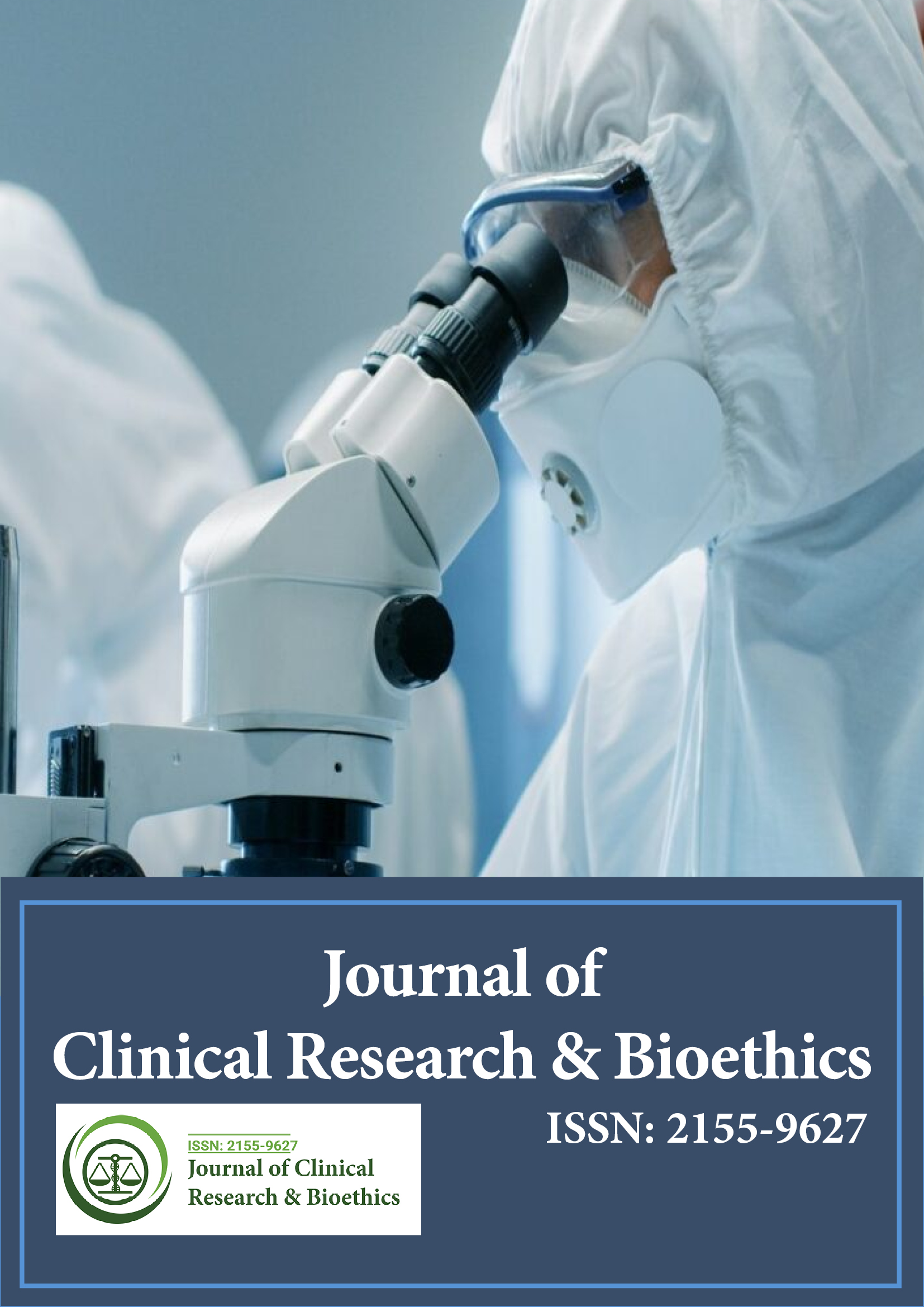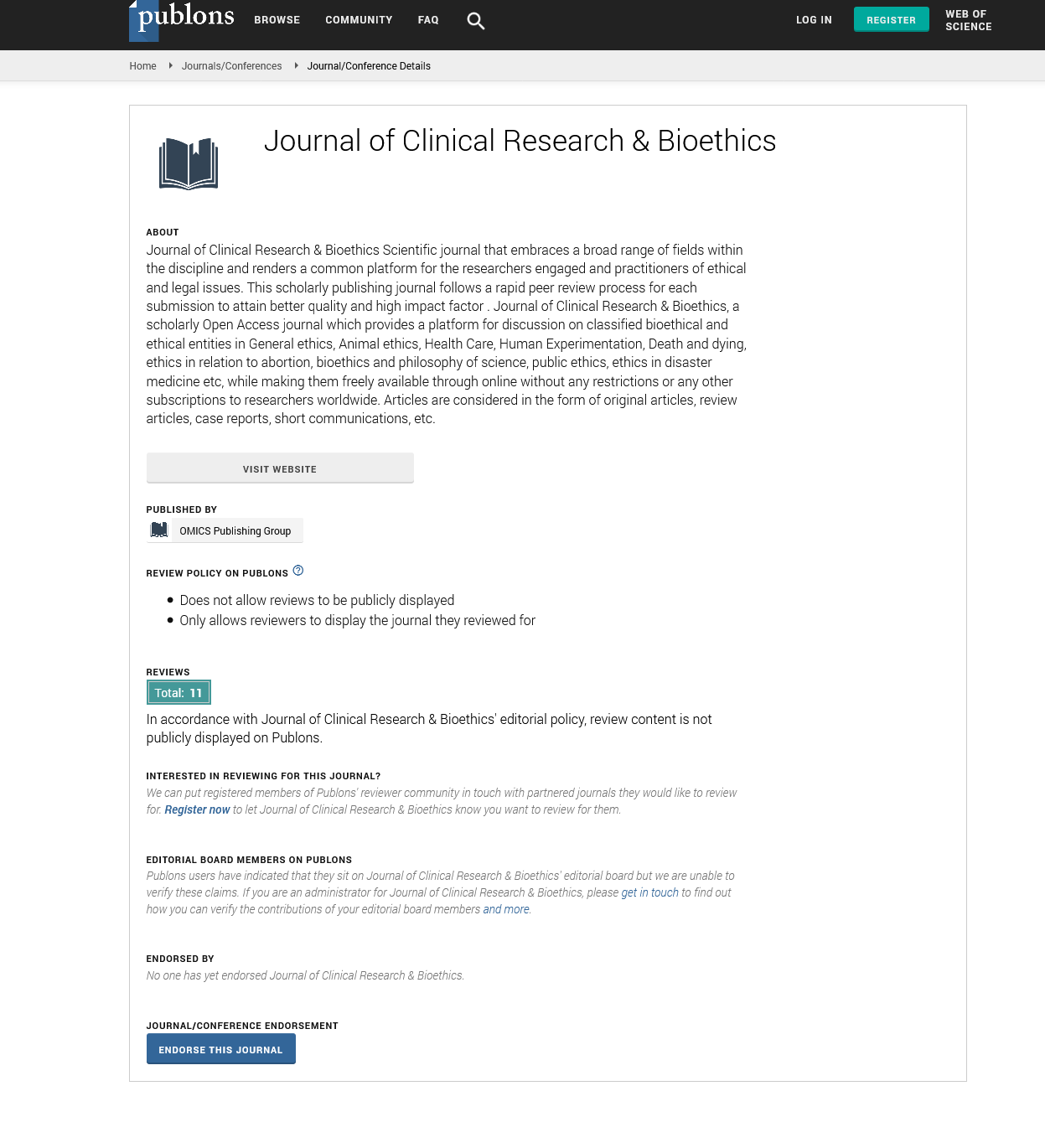PMC/PubMed Indexed Articles
Indexed In
- Open J Gate
- Genamics JournalSeek
- JournalTOCs
- RefSeek
- Hamdard University
- EBSCO A-Z
- OCLC- WorldCat
- Publons
- Geneva Foundation for Medical Education and Research
- Google Scholar
Useful Links
Share This Page
Journal Flyer

Open Access Journals
- Agri and Aquaculture
- Biochemistry
- Bioinformatics & Systems Biology
- Business & Management
- Chemistry
- Clinical Sciences
- Engineering
- Food & Nutrition
- General Science
- Genetics & Molecular Biology
- Immunology & Microbiology
- Medical Sciences
- Neuroscience & Psychology
- Nursing & Health Care
- Pharmaceutical Sciences
Commentary - (2022) Volume 13, Issue 7
Ethical Issues in Medical Research on Animals
Kein Cheng*Received: 16-Jul-2022, Manuscript No. JCRB-22-17742; Editor assigned: 18-Jul-2022, Pre QC No. JCRB-22-17742(PQ); Reviewed: 05-Aug-2022, QC No. JCRB-22-17742; Revised: 16-Aug-2022, Manuscript No. JCRB-22-17742(R); Published: 26-Aug-2022, DOI: 10.35248/2155-9627.22.13.426
Description
Animal research has aided major medical discoveries during the previous century, either directly or indirectly. However, severe ethical concerns arise when animals are used. Animals are exposed to painful procedures or hazardous exposures that leave them damaged, disabled, or even dead. Furthermore, these approaches cause high degrees of stress in animals and disrupt physiological systems, often leading to equivocal results. The use of non-animal approaches to replace animal procedures as much as possible would provide both ethical and technical benefits. Non-animal method development and implementation should be a priority for investigators and research institutions, and should take advantage of a diverse range of perspectives to assure progress toward scientific, human health, and animal welfare goals.
Animal experiments are carried out to achieve three overlapping ends or aims: the first is fundamental research, in which tests are carried out with no direct commercial use or other practical end in mind. The ultimate goal is to gather knowledge, and many scientists feel that these trials frequently yield significant results. The type of study is applied research, which is done to solve specific biological problems or generate commercial goods. It can be done for either medicinal or non-medical purposes. Applied research experiments are more likely to be carried out in the pharmaceutical sector than basic research, which is more academically focused; however some universities may perform these studies in commercial collaboration. Applied research is frequently associated with the treatment or cure of disease and disorder in humans and other animals. Animals are also utilized in toxicology, when commercial items are tested on humans to assess potential hazardous chemical reactions. These components biological responses are also measured. This category of research is concerned with the symptoms, processes, treatment, and detection of poisoning. Dose and amount of exposure to the chemical are the observed parameters used to quantify the toxicity of substances.
Drug testing and cosmetic testing are examples of toxicology examinations. Many countries enacted new legislation to require that all new pharmaceutical items undergo thorough animal testing before being approved for human use. Cosmetic testing is prohibited in several European Union (EU) nations, including the Netherlands, Belgium, and the United Kingdom. The European Parliament and EU members agreed in 2002 to prohibit the use of animals in cosmetics testing beginning in 2009. This agreement would also prohibit the import and sale of cosmetic items that had been manufactured using animal research. Because some members of the public are strongly opposed to cosmetic animal testing, most cosmetic manufacturers would state on their labels that their products are not tested on animals. However, consumer protection laws require them to maintain rigorous standards to ensure that their products are not toxic and dangerous to public health, and that the ingredients are not dangerous in large quantities. Animal testing is required to meet legal standards in the United States and Japan, which is opposed by groups that oppose animal testing for cosmetics. Although some firms have stopped performing animal tests, as stated on their product labels, other animal organizations think that several companies may be falsely claiming that they do not perform tests in animals.
Conclusion
Animal rights organizations strongly believe that humans have no moral right to use individual animals in ways that do not benefit those animals. Computer simulation and in vitro cell culture techniques are the two most widely acknowledged alternatives today. Many of these procedures are still in the works, and many of them will require data from previous animal studies or cultures of other animal-derived creatures. However, this would result in a large reduction in the number of animals utilized in trials. Diabetes, asthma, and drug absorption are all examples of computer simulation models. Cell culture has proven to be the most successful, and it has been employed for more than 30 years by several laboratories for aesthetic and other studies.
Citation: Cheng K (2022) Ethical Issues in Medical Research on Animals. J Clin Res Bioeth. 13:426.
Copyright: © 2022 Cheng K. This is an open-access article distributed under the terms of the Creative Commons Attribution License, which permits unrestricted use, distribution, and reproduction in any medium, provided the original author and source are credited.

